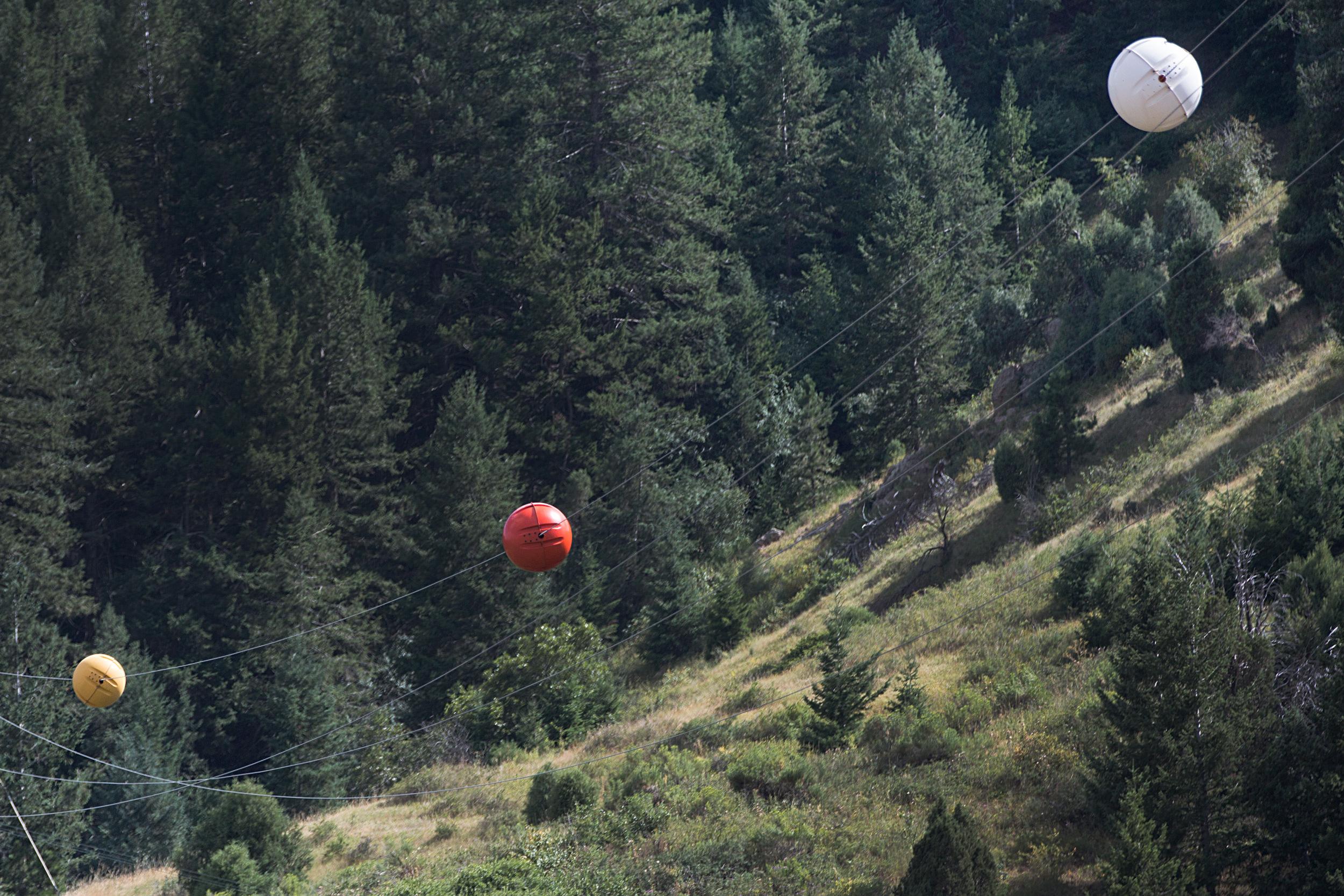
There’s a lot to see from your car as you drive around Colorado. We get questions about it all the time.
What’s that big yellow stack of French fries? What’s with all those Volkswagens? Is that a telephone line or something else in Aurora? Is there more roadkill than usual out there?
Heather Hagen and her husband were on their way to look for a new house driving southwest out of Denver on Highway 285 when she noticed the large orange balls attached to the overhead powerlines. Naturally, she asked Colorado Wonders about it.
They’re called aerial marker balls and longtime Coloradans might remember their connection to a time when Denver’s skies buzzed with news helicopters.
There’s been speculation that the balls weigh down the lines for wind control. But that’s not true. The main purpose of the marker balls is so that helicopters and low-flying planes don’t hit electrical wires. They are an extra precaution since anything that flies isn’t supposed to fly lower than the electrical towers.
In 1988, two journalists — pilot-reporter Leo Galanis and photographer John “Brian” Hostetler — were killed in a crash. Associated Press accounts from the time said that the “‘Sky 9’ helicopter hit a three-eighths-inch-thick steel cable about 150 feet above the South Platte River and plunged to the ground.”
The crash was in the river canyon outside of Cheesman Lake, southwest of Denver.
Manny Sotelo, a photojournalist at 9News, remembered that it “was like any other day,” he said. At the time, Sotelo was the assistant chief photographer under Hostetler.
The station had a two-way system that all helicopters could communicate through. He remembers hearing a colleague on the radio that wasn’t Hostetler or Galanis.
“Five minutes later, I hear him say he’s searching for the site,” he said. “Again, I’m thinking ‘what site is he looking for?’ And as minutes went by, even then, I thought he can’t be looking for a crash site”.
Five minutes later, his colleague radioed to the assignment desk when the survivors were found. That’s when it hit him that it was Sky9.
“It was tough to do the job for the next three to five days, up until Brian’s funeral,” Sotelo said.
Markers were just getting implemented in Colorado in the late 1980s according to Xcel Energy, which was then known as the Public Service Company of Colorado. The company had worked to install aerial markers both before and after the 9News helicopter crash. Xcel covers about 65 percent of the state’s energy and the choice to implement the balls is voluntary — the Federal Aviation Administration does not have jurisdiction to enforce, they can only recommend.
These markers have been around since the 1950s when they started to show up in states like Arkansas and Florida. The standard color at the time was red, but Allen Kenitzer, the FAA’s regional public affairs manager said a safety study indicated that orange was actually the best color for visibility.
The color always depends on the location. Some colors aren’t great because they blend into the surroundings.
The FAA advises that markers appear on wires that cross canyons, lakes and rivers. However, it also recognizes that certain weather conditions and manufacturing placement standards can affect the placement and use of visibility markers.
After the crash, 9News began new protocols for safety. For sensitivity reasons, the station asked who was and wasn’t comfortable using the helicopters. For Sotelo, he knew he wouldn’t be on the fly list after the crash.
“My wife encouraged me not to fly anymore and I loved to fly,” he said. “I saw most of the state that way.”
A Denver Post story from 2010 notes that Sky9 was involved in six crashes between 1980 and 1992, two of which were fatal. CBS Denver saw a fatal crash in 1988. Despite that, Sotelo is still supportive of television news having helicopters as “a valuable tool for tv newsrooms. It’s sad to see them slowly going away, mainly because of the amount of money it costs to operate.”
Today, only one news helicopter flies above the Mile High City. All of the TV stations and KOA Newsradio share in its operation.








